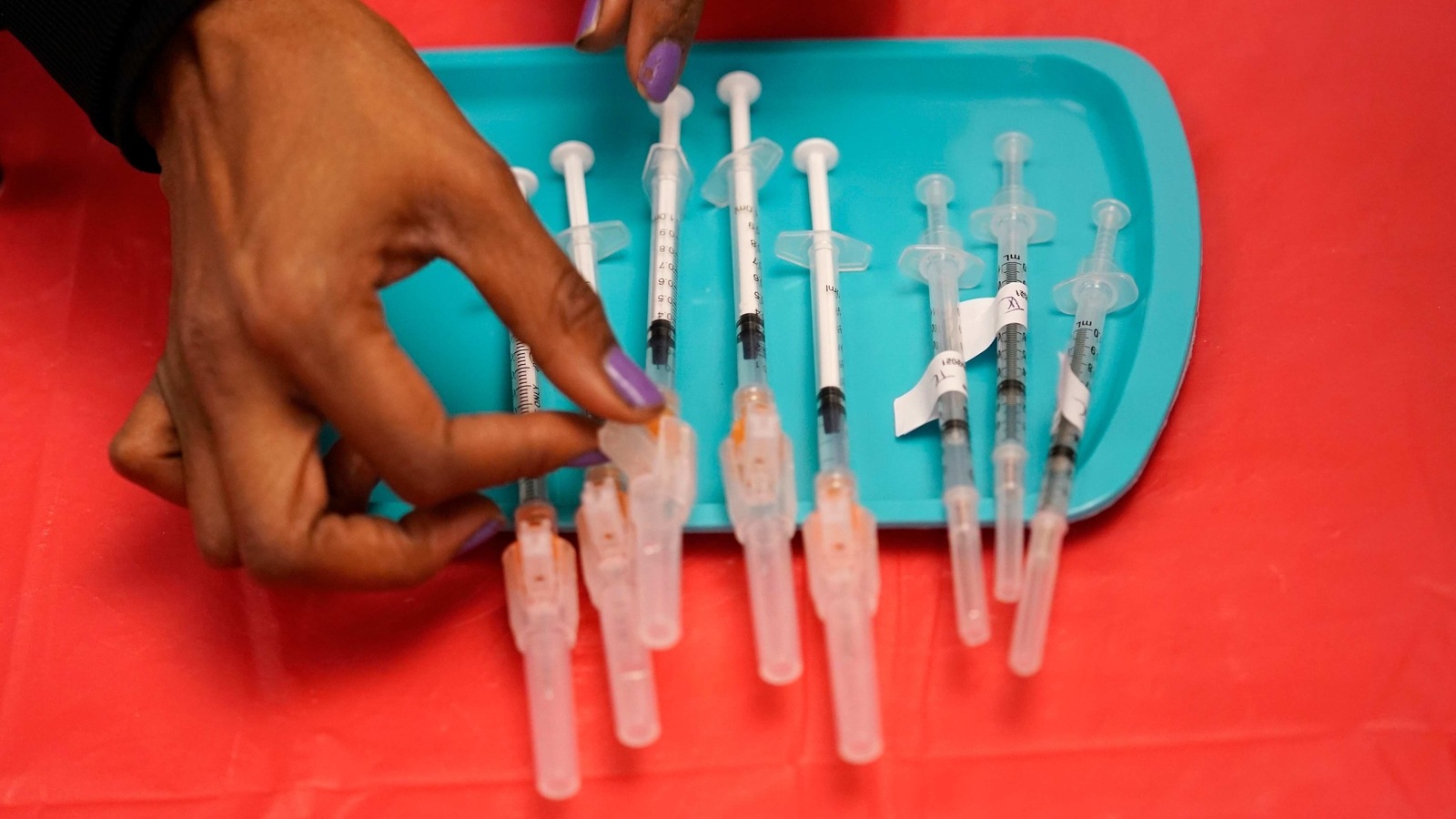Tech glitches, swamped websites impede US vaccine rollout
Like much of the US response to the coronavirus pandemic, the vaccination effort has been deployed in a patchwork approach. And it has been layered on top of an already fragmented health-care system.

In Mississippi, an online vaccine registration system buckled in a sudden onslaught of traffic. Officials at a local health department in Georgia had to resort to counting every dose they receive before scheduling appointments. A $44 million national vaccine scheduling and tracking system is going largely unused by states.
And California, Idaho and North Dakota undercounted vaccinations because workers forgot to click on a “submit” button at the end of the day.
Across the US, a vaccination campaign that was meant to reverse the tide of the pandemic and spur the nation's economic recovery is getting bogged down by technical glitches and software woes. Cash-strapped public health departments are trying to keep their websites from crashing while booking millions of appointments, tracking unpredictable inventory, and logging how many shots they give.
The situation unfolding across the US, home to technology giants, is frustrating a public eager for the inoculations. Further, gaps in the data could be distorting the national picture of how efficiently vaccines are being used, if some number of doses that are administered don't get counted.
“Our sense is that it's a substantial amount,” said Marcus Plescia, chief medical officer at the Association of State and Territorial Health Officials. “That will become more clear as the data systems get improved and we get a better sense about what we're missing.”
Plugging gaps
It's a situation some officials saw coming. Former Centers for Disease Control and Prevention Director Robert Redfield cited “years of underinvestment” in public health systems in his testimony before Congress in September. He said then that the Trump administration was planning to help states plug holes in IT capacity.
“Hopefully, there'll be further resources to begin to fill those gaps because it is going to be very important that we do have the reporting for the monitoring and safety of these vaccines,” he said.
Redfield and groups representing state health officials told lawmakers that billions in investment would be needed to help states distribute shots. But Congress didn't allocate that money until it passed a funding bill in late December, after states had already begun vaccinating people.
Private companies giving vaccines are experiencing their own issues. Jarred Phillips, his sister, mom and dad each took turns searching the website of Walgreens Boots Alliance Inc. to find a vaccine appointment for his mom. The process included creating an account, searching by Zip code, then by store, by day and by three-hour time slot.
Nothing came up. Phillips, a 36-year-old technology worker in Wilmington, Delaware, even looked for rural Zip codes where there might be light demand. Nothing. Hours later, he couldn't figure out why the process was so complicated.
“At some point, these solutions have to meet people where they are,” he said.
Walgreens spokeswoman Kelli Teno said the company has “dedicated teams actively working through these issues to ensure an easy, secure and transparent experience for all eligible individuals” who are trying to schedule their vaccinations.
Patchwork systems
Like much of the US response to the coronavirus pandemic, the vaccination effort has been deployed in a patchwork approach. And it has been layered on top of an already fragmented health-care system. The result is a mishmash of digital systems across the country that have exasperated many people trying to use them.
“The biggest mistake was that the government was a little too focused on the first problem: How to get vaccines and ship them to different locations,” said Eren Bali, co-founder and chief executive officer of Carbon Health Technologies Inc. “It definitely was an oversight not starting earlier.”
So far, about 49 million doses have distributed across the US About 23.5 million people have received their first of two shots and 5 million have received both, according to the Bloomberg Vaccine Tracker. Last month, Trump administration officials had projected that 30 million people could be fully vaccinated by the end of January.
Registering people in advance is encouraged to prevent crowds from forming at clinics, especially with the virus still surging in many communities. But sign-ups have sometimes been chaotic, especially for older people who are among the first in line for vaccines, with websites for appointments seeming like lotteries.
Before opening appointments, Gwinnett, Newton and Rockdale county health departments in Georgia first counts its inventory. The anticipated supply can change each week, and the amount that actually arrives may differ. The health department relies on Bookly, a web plug-in it started using last year for coronavirus testing.
New appointments open once a week. They're filled in hours.
“It's difficult to communicate with the public as to when appointments are open,” said Audrey Arona, the director. “I know there's a lot of frustration having to sit on the website constantly for when appointments open.”
The Georgia Department of Public Health is working on a centralized scheduling system. The tool is expected to be ready by mid-February, spokeswoman Nancy Nydam said in an email.
In Florida, several counties turned to ticketing website Eventbrite when the state expanded eligibility to people 65 and older. Los Angeles scrapped a software called PrepMod because it couldn't handle the registration rush. The city instead turned to Carbon Health, which runs a chain of health clinics. The company set up an online tool to find testing sites, and it built a vaccine platform from that.
Tracking immunisations
Staff at Christus Health have spent as much time documenting and reporting vaccinations as they have actually administering the shots, said Sam Bagchi, chief clinical officer of the Irving, Texas-based health system. Christus has administered about 65,000 doses in Texas, Louisiana and New Mexico.
The shots are reported to states differently depending on who's receiving them: One electronic health record for employees, another for its patients, and, until recently, paper forms for people who were neither patients nor staff.
Christus separately counts its vaccine inventory manually and types the data into a web form for the state. Existing systems aren't “intended to then track minute to minute, hour to hour, day to day, what's being given and what's not being given,” Bagchi said.
Public health technology systems aren't built for the precision needed for the mass vaccination effort, said Joseph Kanter, an official with the Louisiana Department of Health.
“It's like taking a Yugo and trying to go 150 down the highway,” Kanter said. “Sometimes the fender falls off.”
Catch all the Latest Tech News, Mobile News, Laptop News, Gaming news, Wearables News , How To News, also keep up with us on Whatsapp channel,Twitter, Facebook, Google News, and Instagram. For our latest videos, subscribe to our YouTube channel.
































